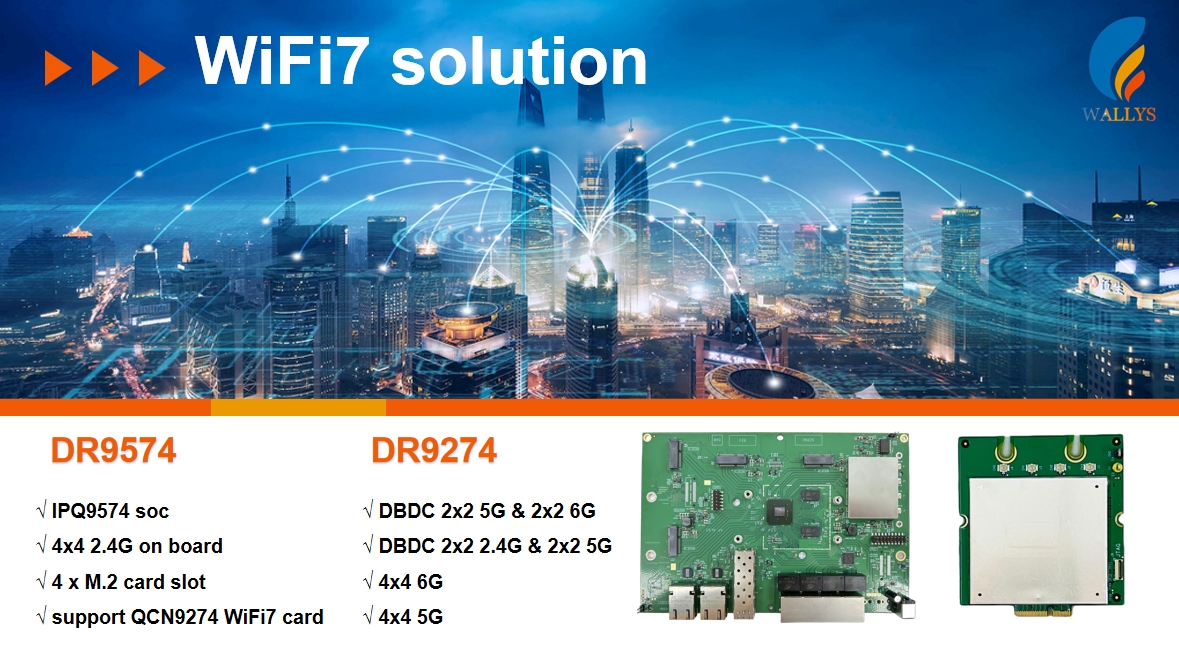|
|
### QCN6274 vs QCN6224: Technical comparison
QCN6274 and QCN6224 are Qualcomm's 5G baseband chips, and they both support 5G NR (New Radio) and LTE (Long-Term Evolution) networks. However, they differ in some ways.
First, the QCN6274 is Qualcomm's latest generation of 5G baseband chips, while the QCN6224 is the previous generation of chips. The QCN6274 uses a 7-nanometer process, while the QCN6224 uses a 10-nanometer process. This means that the QCN6274 is more advanced, efficient and energy efficient than the QCN6224.
Second, the QCN6274 supports higher 5G speeds and a wider range of frequency bands. It supports Sub-6GHz and millimeter wave bands, with a maximum download speed of 7.5Gbps and a maximum upload speed of 3Gbps. The QCN6224 only supports the Sub-6GHz band, with a maximum download speed of 2.5Gbps and a maximum upload speed of 316Mbps.

In addition, the QCN6274 supports more 5G features such as dynamic spectrum sharing (DSS), multi-user MIMO (MU-MIMO), and Super Access (SA). These features can improve the efficiency and performance of 5G networks and provide users with a better network experience.
1. Comparison of technical specifications
- **QCN6274: **
- ** Supported wireless standards: ** Wi-Fi 6E, Bluetooth 5.2
- ** Frequency band: ** 2.4GHz, 5GHz, 6GHz
- ** Maximum speed: ** 9.6 Gbps
- ** Chip process: ** 7nm
- **QCN6224: **
- ** Supported wireless standards: ** Wi-Fi 6, Bluetooth 5.1
- ** Frequency band: ** 2.4GHz, 5GHz
- ** Maximum speed: ** 3 Gbps
- ** Chip process: ** 10nm
### 2. Frequency band support and rate
- **QCN6274: **
- Support for the Wi-Fi 6E standard, including the 6GHz band, enabling it to offer wider band coverage and higher rates up to 9.6 Gbps.
The support of the 6GHz band gives the QCN6274 a clear advantage in spectrum utilization and anti-interference capability.
- **QCN6224: **
- The 6GHz band is not supported, limited to 2.4GHz and 5GHz bands, with a maximum speed of 3 Gbps.
3. Process technology and power consumption
- **QCN6274: **
- 7 nm process technology with higher integration and lower power consumption, thus providing higher performance and lower energy consumption.
- **QCN6224: **
- Using 10nm process technology, power consumption may be slightly higher compared to the QCN6274.
### 4. Special features
- **QCN6274: **
- Supports the Wi-Fi 6E standard, providing wider band coverage and higher rates, and is suitable for application scenarios that require higher rates and frequency bands.
- **QCN6224: **
- Although the 6GHz band is not supported, it still provides good performance and stability in general Wi-Fi applications.
5. Application scenarios
- **QCN6274: **
- Suitable for applications requiring high performance, such as HD video transmission, virtual reality (VR) and augmented reality (AR) devices, and Internet of Things (IoT) devices.
- **QCN6224: **
- More suitable for general Wi-Fi applications, such as home routers, smart speakers, etc., the rate and frequency band requirements are not particularly high.
### Conclusion
QCN6274 and QCN6224 are two chips that have attracted much attention in the field of wireless communication, and they have obvious differences in technical specifications, frequency band support, process technology and application scenarios. When selecting the right chip, it is necessary to make comprehensive consideration according to the specific application requirements and performance requirements to ensure that the most suitable solution is selected.
|
|